Ohio State's Gene Smith: 'A magnificent masterpiece painting of a career'
In 2005, Ohio State approached Gene Smith to interview for its athletic director job.
Smith, a Cleveland native, turned OSU down. Twice.
He was the athletic director at Arizona State. He was happy there. He and his wife, Sheila, had a home on a golf course, a backyard pool, a view of the mountains.
Smith had big plans for Arizona State, and he wanted to see them to fruition. Returning to Ohio held little appeal to him. But Sheila told her husband he should interview anyway and pressed him on it.
“Sheila and one of her buddies, (novelist and educator) Jewell Parker Rhodes, told me I had a responsibility to interview because Ohio State had never had a Black athletic director,” Smith said. “They hit me hard. Of course, they had two bottles of wine.”
An interview was arranged in Dallas, but Smith was still unenthusiastic about pursuing the job. He wasn’t even going to wear a necktie until Sheila made him.
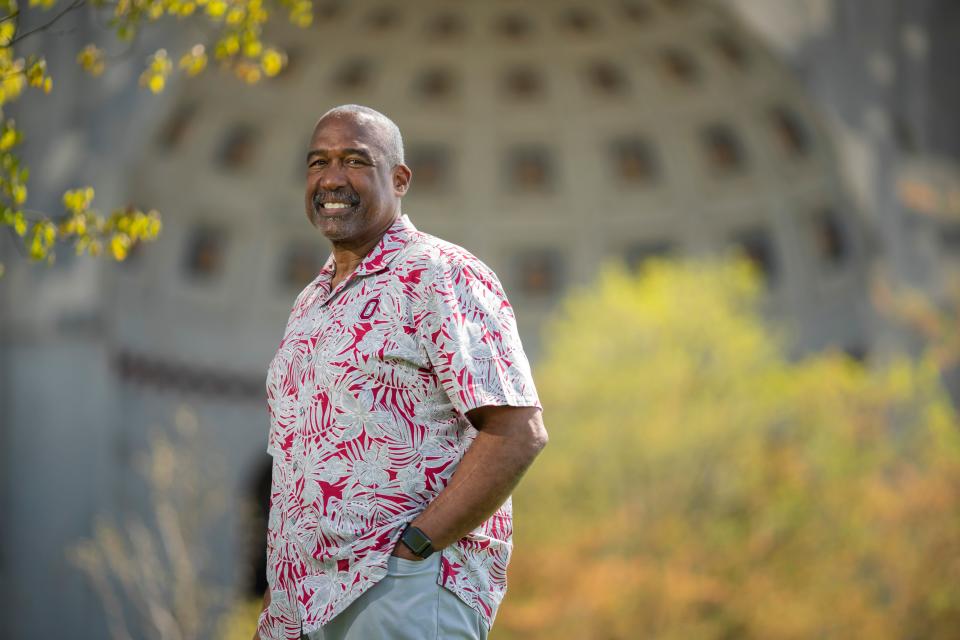
Now, as he gets set to retire at the end of June, Smith, 68, can laugh about his ambivalence. He had been a successful athletic director at Eastern Michigan, Iowa State and Arizona State. But it was his 19-year tenure at Ohio State that cemented his place in history among athletic directors.
Since 2005, 127 Buckeye individuals and 35 teams have won national titles. Academic performance among OSU athletes has improved significantly.
Under his watch, the 3,700-seat Covelli Center opened, as did the Ty Tucker Tennis Center, a new lacrosse and field hockey stadiums and the Schumaker Complex, which houses locker rooms for all Ohio State's Olympic sports athletes and is attached to the Woody Hayes Athletic Center.
Smith served on numerous influential boards and committees, including the CFP and NCAA men’s basketball tournament selection committees, and one dealing with the issue that would become known as name, image and likeness.
Jim Delany served as the Big Ten commissioner from 1989 until 2020. By his count, he worked with 71 athletic directors.
“There’s no doubt in my mind,” Delany said, “that he deserves a place on the Mount Rushmore of college athletics.”
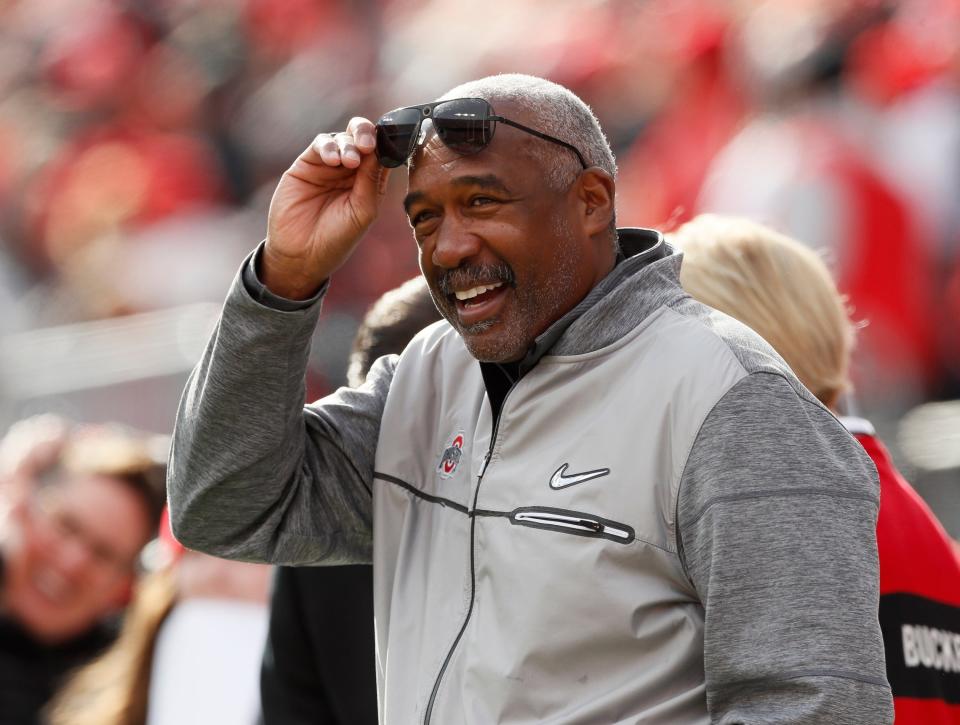
Ohio State's Gene Smith learned from Civil Rights Movement
Smith did not plan to become an athletic director. As a kid, that would have seemed preposterous.
“I grew up in the city of Cleveland at a time when the Civil Rights Movement was heavy,” he said. “You’re just trying to get from middle school back home safely. I had no clue what I was going to do in life.”
Smith’s mother, Elizabeth, grew up in the Jim Crow era near Gainesville, Florida.
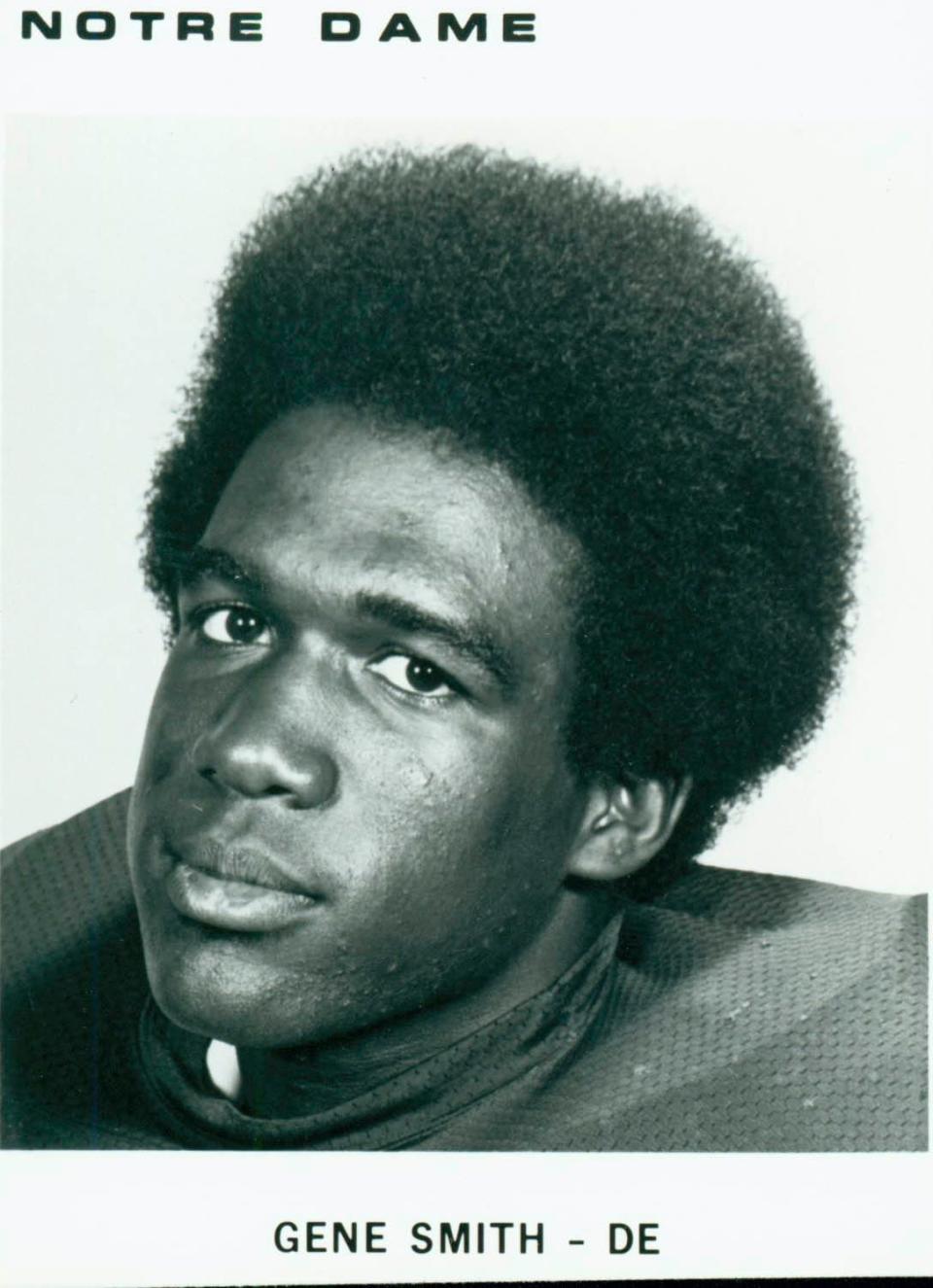
“She used to tell us stories all the time about how she had to walk in the gutter and let the white students pass on the way to school or the bus,” he said. “But she always said to take the high road. My dad used to say that it takes a bigger man to walk away from a fight than it does to fight.”
Ted Smith was an electrician, and his son figured he’d become one himself and work alongside him.
But Gene was a standout football player, and big-time college coaches, including Ohio State’s Woody Hayes and Michigan’s Bo Schembechler, came to his house to recruit him. John Hicks, Ohio State’s Heisman Trophy finalist offensive tackle, was Smith’s host on his official visit.
Tempting as it was to become a Buckeye, Smith’s best friend was Ross Browner, who would become an All-American. They both loved Notre Dame coach Ara Parseghian and decided to play for him.
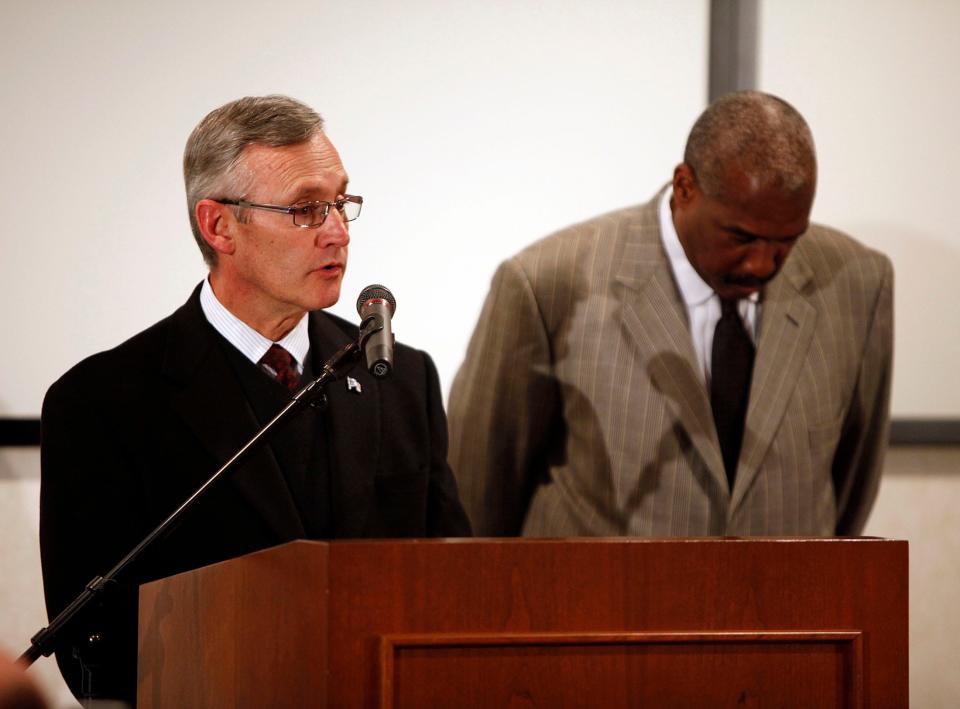
Smith played defensive end for the Fighting Irish and was on the 1973 national championship team. Smith became an assistant coach after he graduated. When he wasn’t retained by new coach Gerry Faust after the 1980 season, he took a sales job with IBM at a time when the computer industry was in its infancy.
Smith was successful at IBM and believes his two years in the corporate world were invaluable. But he didn’t love it.
When Eastern Michigan athletic director Paul Shoults, a former Notre Dame assistant coach, called Smith to gauge his interest in a job, Smith took it.
After Shoults left, Smith became Eastern Michigan’s athletic director in 1985. He moved to Iowa State in 1993 and Arizona State in 2000.
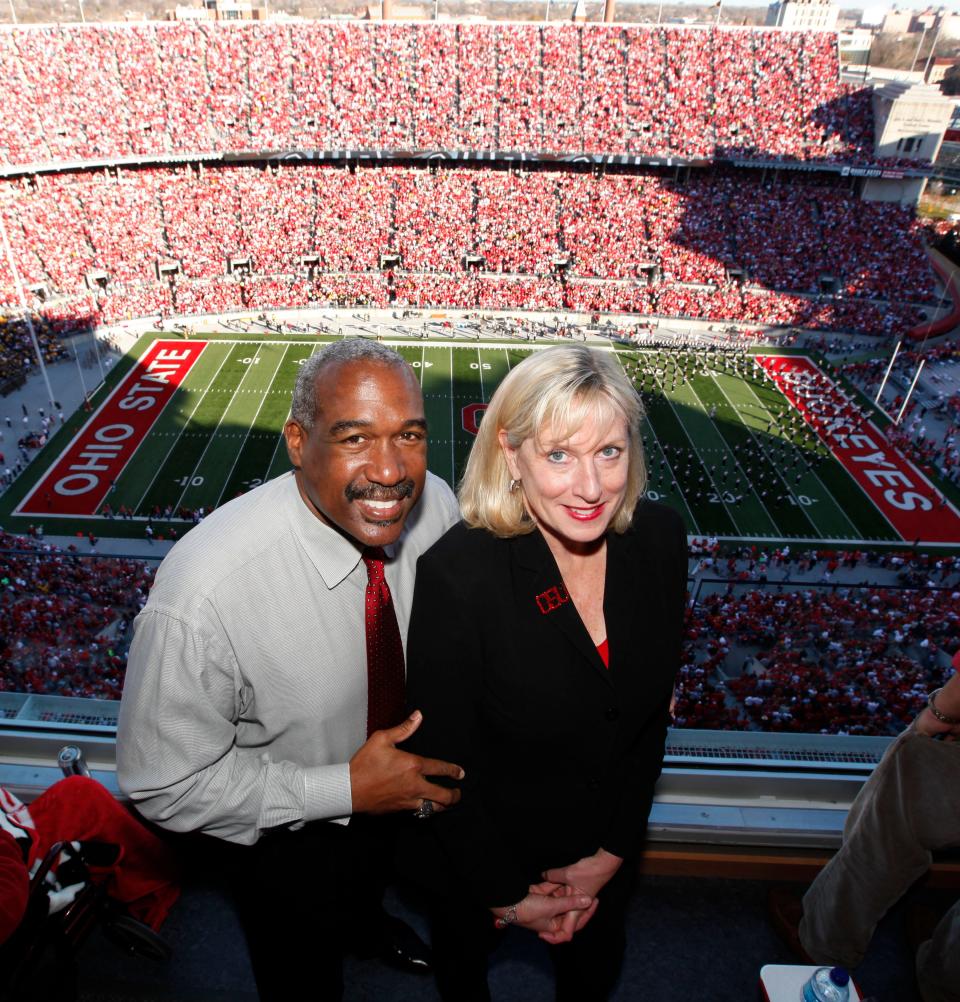
Gene Smith faced huge expectations at Ohio State
No AD job is quite like Ohio State’s. No program has more varsity sports than the Buckeyes’ 36, with about 1,000 athletes participating. OSU’s athletic department reported revenue of a national high of $279.5 million in the most recent fiscal year, almost double the revenue (even adjusted for inflation) that OSU produced in 2005.
Expectations for success, especially in football, are immense.
During Smith’s OSU tenure, Ohio State has enjoyed plenty. The 2014 football team won the first College Football Playoff, and the Buckeyes have been in the BCS or CFP title game three other times. The men’s basketball team reached the NCAA championship game in 2007. Men’s volleyball won the 2011, ’16 and ’17 national titles. The women’s hockey team has won two national titles in the past three years. Synchronized swimming has won 10 national championships. The wrestling team won its first national championship in 2015.
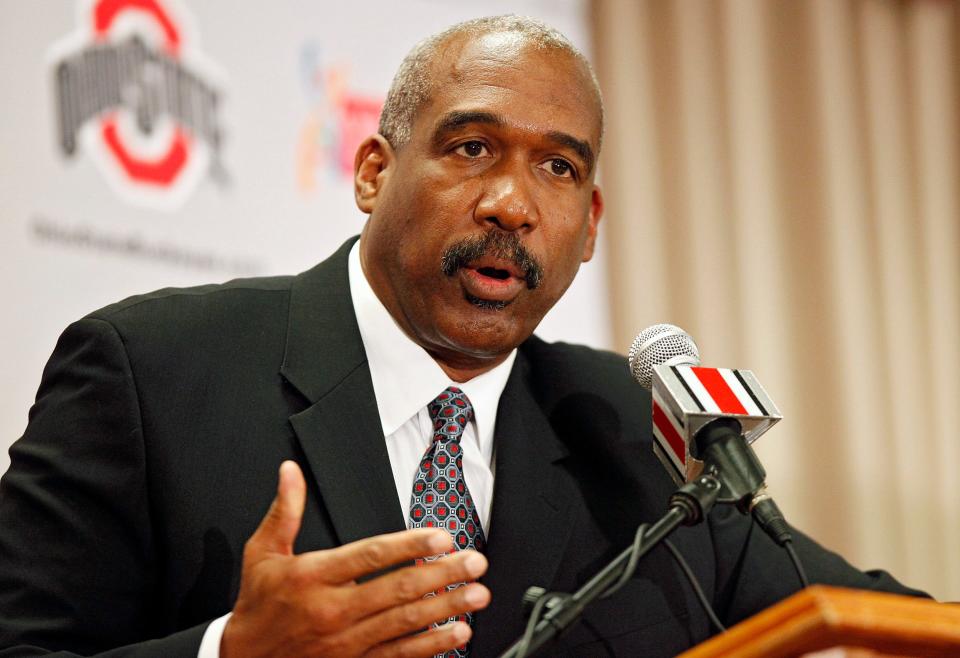
As gratifying as the championships have been, Smith said he takes more pleasure in the academic improvement of athletes in his time at OSU. Under Smith, 811 student-athletes achieved Scholar-Athlete status in the '23-24 school year by having a 3.0 GPA. In 2005, Smith said, OSU had only 324 Scholar-Athletes.
Under football coach Urban Meyer, Ohio State started a Real Life Wednesdays program designed to help prepare players for post-football careers. That has now been expanded under the Eugene D. Smith Leadership Institute. The OSU student-athlete graduate rate under Smith is 94%.
“The majority of our student-athletes are getting gainful employment when they’re done,” Smith said. “We really got them into shadowing programs, internships and postgraduate school. Those things really mean a lot to me. Of course, winning championships do, but I feel good about the culture we created in the athletic department and with our student-athlete population.”
At many big schools, the athletic director can seem to be a remote, unapproachable figure. That’s not the case at Ohio State.
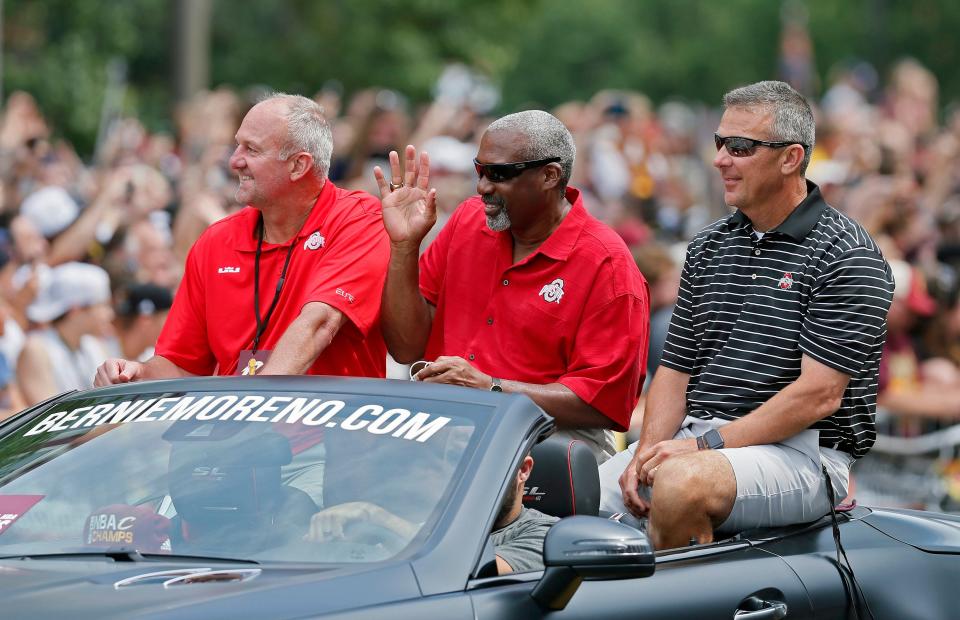
“The thing I appreciate about Gene is that he was around,” said Joshua Perry, a linebacker on OSU’s 2014 football team. “He spent time with us, got to know us, know our families.
“I was friends with a lot of athletes at Ohio State, some of them in non-revenue sports. I’d go in my downtime to watch them compete, and I would see Gene out there with Sheila. I thought it was awesome.”
Nadine Muzerall took over the women’s hockey program when it was at its nadir eight years ago. She said Smith delivered on his promise that she would get all the resources needed to build the program.
“To have that support and to fix a program that was very broken and to care and truly dig in and make it something special was important,” Muzerall said.
Muzerall understands that football is king at Ohio State, but she said Smith doesn’t treat other sports as less important.
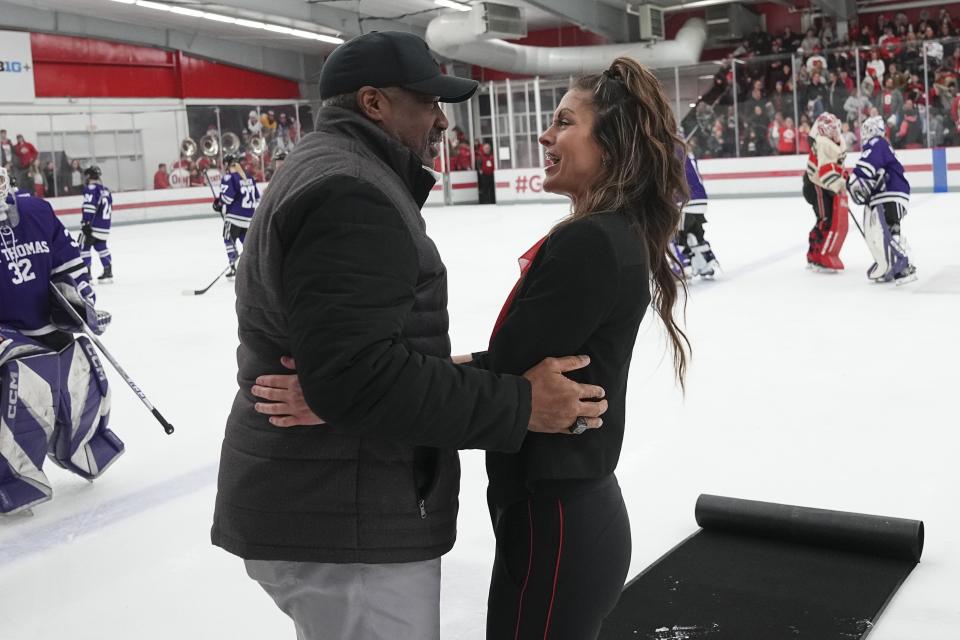
“I think his superpower is his ability to connect and make you feel like you’re the most important person, coach or team on campus,” Muzerall said. “To have him come to almost every Friday game when there was no conflict with football, to be visible, to fist-pump the girls out of the locker room. ... He knew all the girls on the team and a lot of their parents.”
The Buckeyes have reached the Frozen Four the past four years. The Smiths have attended each one.
“I never saw anyone (else’s) athletic director there,” Muzerall said. “I saw the associate AD or sport AD, but not the actual AD of the school. And Gene was everywhere. He cares. I think that just makes you run through a wall for him.”
It probably helped that Smith is a former Division I athlete and coach, an increasingly rare background for athletic directors these days. He understands what athletes and coaches want.
Meyer met with Smith in Atlanta in late 2011 to discuss taking the football job. Meyer said that he had only two conditions. He wanted assurance he could hire his right-hand man, Mickey Marotti, as the strength coach. Second, Meyer said, he needed a commitment that no corners would be cut in providing for the well-being, health and safety of his players.
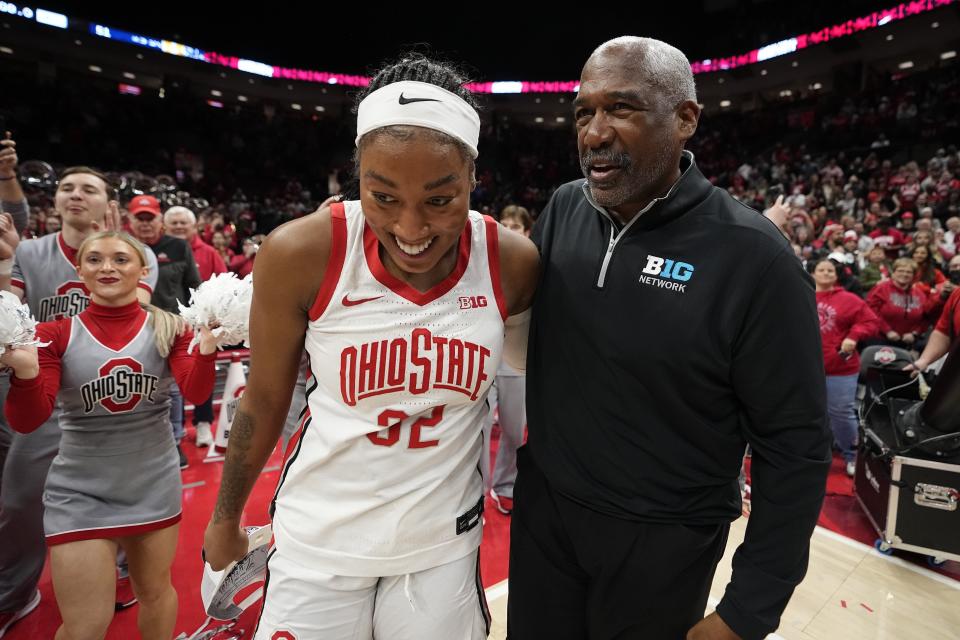
“We have to invest in these guys — in nutrition, weight training, athletic training, sports psychology, because we are on the cutting edge of all that,” Meyer said he told Smith. “And he looked at me and says, ‘You’ve got it.’ How many ADs actually do that?
“We were right on the forefront of this transformation (in college sports). I’d like to think we set the bar. That’s why I would tell people we are the best, and I still believe Ohio State has the best infrastructure in college sports.”
In 2018, Meyer was suspended because of a saga involving assistant coach Zach Smith. Smith was accused by his estranged wife of domestic abuse. He is the grandson of former OSU coach Earle Bruce, Meyer's mentor. Questions swirled about how much Meyer knew of the accusation and about his response.
Ohio State placed Meyer on administrative leave on the eve of training camp. Gene Smith appointed Ryan Day as acting coach despite having former head coaches Greg Schiano and Kevin Wilson on the staff. Day had never been a head coach.
“When he turned to me in that moment,” Day said, “it gave me confidence because he saw something in me that led him to believe that I was ready to take over that situation, and so it empowered me.”
When Meyer decided to step down at the end of the 2018 season, Smith hired Day as his successor.
“My family and I are very much in debt to the opportunity he provided,” Day said. “That’s why I’ve worked so hard to make sure I’m doing my job at a high level.
“Every year, our relationship gets stronger. He’s been a mentor. He’s been a friend. He’s been a boss. I would never be in the situation that I am right now without him.”
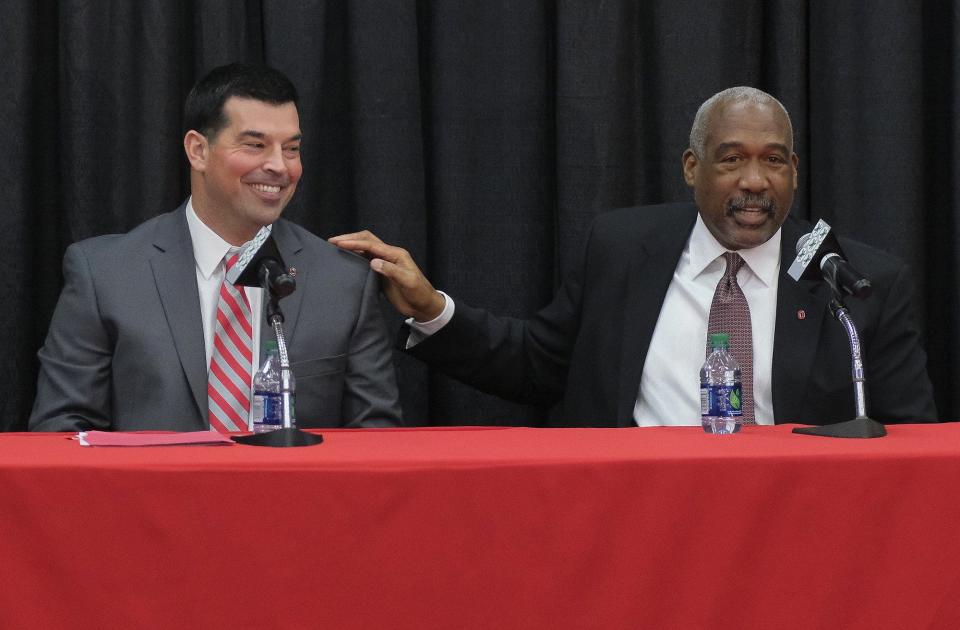
Ohio State's Gene Smith succeeded with strong people skills
One of the reasons Smith tabbed Day was his belief that Day had high EQ (emotional intelligence). Smith believes that knack for connecting with people is his own biggest strength.
“I know I’m not, IQ-wise, the smartest guy in the room,” Smith said. “Never. But I do know that I have a skill in evaluating people and group dynamics. I have that ability to connect with people the right way, and then read a room and the social environment that exists.”
It’s a natural gift, he believes, enhanced by books he has read on the subject.
“In the athletic director role,” said University of Washington AD Pat Chun, one of Smith’s proteges, “you’re thrust into different situations with different audiences that you’re communicating with, whether it’s student-athletes, coaches, donors, corporate sponsors or politicians. Gene’s greatest strength is his self-awareness. He’s keenly self-aware of who he is, what his role in specific meetings is, what the goals are in that meeting, and how to get from point A to point B.”
Sheila often helps get him there.
“She’s the high IQ in the family,” Smith said. “She’s Dr. Smith. She’s got a PhD.”
They met at a convention when each was divorced. Sheila, who is from Vancouver, British Columbia, was the starting center on the 1976 Canadian Olympic women’s basketball team. She became a coach at UNLV before becoming an accomplished fundraiser in the athletic department there and then at OSU. When the Smiths moved to Columbus, they had an 8,800-square foot home in Blacklick where they entertained and courted donors.
“Sheila was the driver of that,” Gene said. “She’s my conscience. She has no filter around telling me certain things.”
Chun said that when Thad Matta was the Ohio State men’s basketball coach, Sheila would sometimes watch Matta's daughters overnight on road trips so that he and his wife, Barbara, could have some time to themselves.
“My wife does that now here,” Chun said.
Gene Smith faced tough times at Ohio State
Any athletic director who’s been in a high-profile job like Smith has been for 19 years is bound to have valleys as well as peaks. Smith has not been immune.
He let go of Matta and Chris Holtmann as men’s basketball coaches. Women’s rowing coach Andy Teitelbaum was fired in 2020 after a university investigation found he had dismissed mental-health concerns among the team members. Muzerall’s two predecessors were fired, one for inappropriate behavior and the other because of NCAA violations. Five years ago, an assistant OSU women's basketball coach, Patrick Klein, resigned amid allegations that he behaved inappropriately toward players.
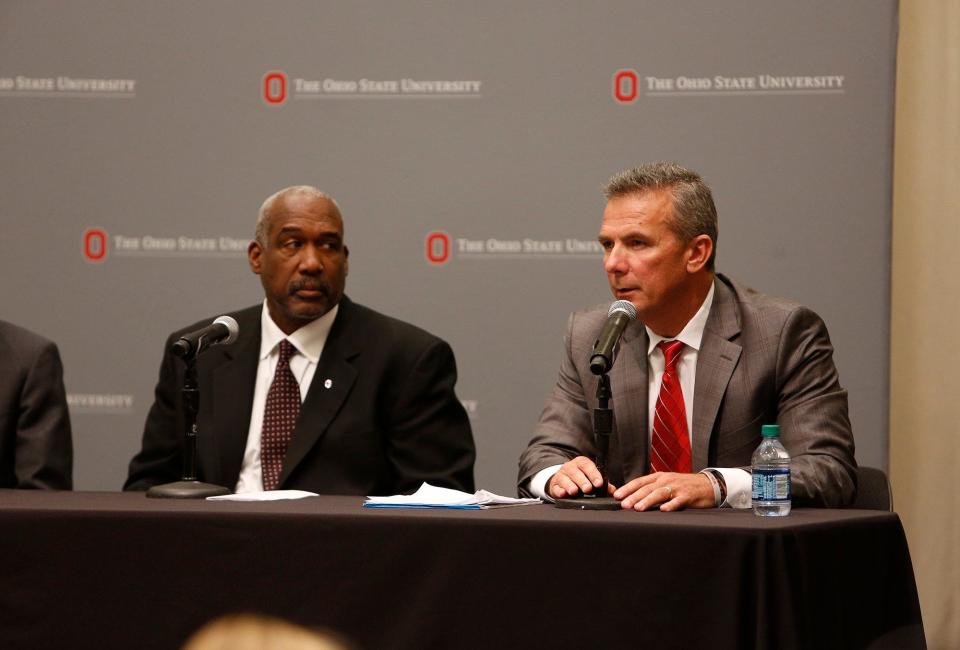
In 2011 during a tattoo-and-memorabilia scandal, he had to part ways with Jim Tressel after it became known that Tressel had signed an NCAA form stating he didn’t know of a potential violation when he in fact had been told.
“It hurt,” Smith said. “It really hurt. Such a good man. Iconic. That was painful.”
The Buckeyes limped to a 6-7 season that included a Gator Bowl loss. Smith chose not to self-impose a bowl ban, believing it wasn’t warranted. He was stunned when the NCAA banned OSU from the postseason in 2012, which denied that undefeated team a chance for a national championship in Meyer’s first season.
Seven years later, Smith himself was disciplined as part of the Zach Smith situation. Both he and Meyer were suspended for three weeks for their handling of the matter.
“Mistakes were made, and people needed to be accountable for them,” Smith said. “I needed to be accountable. Urban needed to be accountable. Whether I agreed with the suspension and how it was levied, that’s another issue. I just think differently.
“Sure, initially I was pissed off, but I don’t stay pissed off long. I move to resolution. I could stay pissed off and wallow in it and do what I used to do when my dad would beat me with a belt. But I just don’t think that way. I move to, ‘How do we and how do I be positive?’ And that’s what I did.”
Michael V. Drake, OSU’s president at the time, said that suspension did not affect his overall opinion of Smith.
“He was a great leader of young men and women,” Drake said. “He understood the full student-athlete and the full student-athlete experience, and he was always an advocate for athletics at the highest level but also integrity at the highest level.”
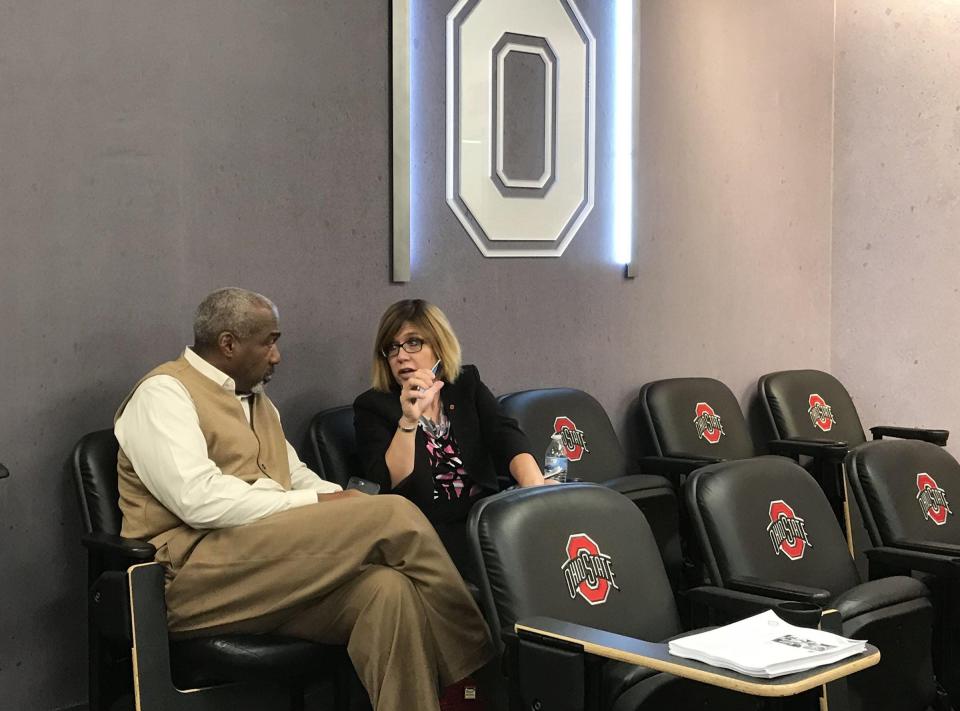
Gene Smith leaves big 'coaching tree' of athletic directors
Smith’s departure will leave a void, but his legacy will probably best be kept alive by the numerous proteges now entrenched as athletic directors. Few ADs have bigger “coaching trees,” and none are more diverse.
When Smith first became an athletic director at Eastern Michigan, he had few colleagues who looked like him. At meetings, he knew some of the others didn’t want him in the room, even if the racism he encountered was more covert than overt.
“You kind of knew where not to sit,” Smith said. “But there were plenty of guys in the room who were welcoming.”
The meetings included almost exclusively men. Women athletic directors were as rare as minority ones.
He vowed that if he got in a position to help change that, he would. Smith mentored numerous underlings at OSU, giving them major responsibilities that allowed them to enhance their experience and become ADs themselves. Ben Jay became the first Asian-American AD when he took the Hawaii job. Chun became the first Asian-American at a Power 5 conference when he got the Washington State job.
Heather Lyke is at Pittsburgh and Diana Sabau at Utah State. Martin Jarmond, who is Black, is the AD at UCLA.
“I was very intentional at the beginning here at Ohio State about hiring diverse people and women, trying to help them develop and grow,” Smith said. “As a hiring authority, diversity is important to your department in what you do. You want to give those opportunities for those people to have leadership positions.”
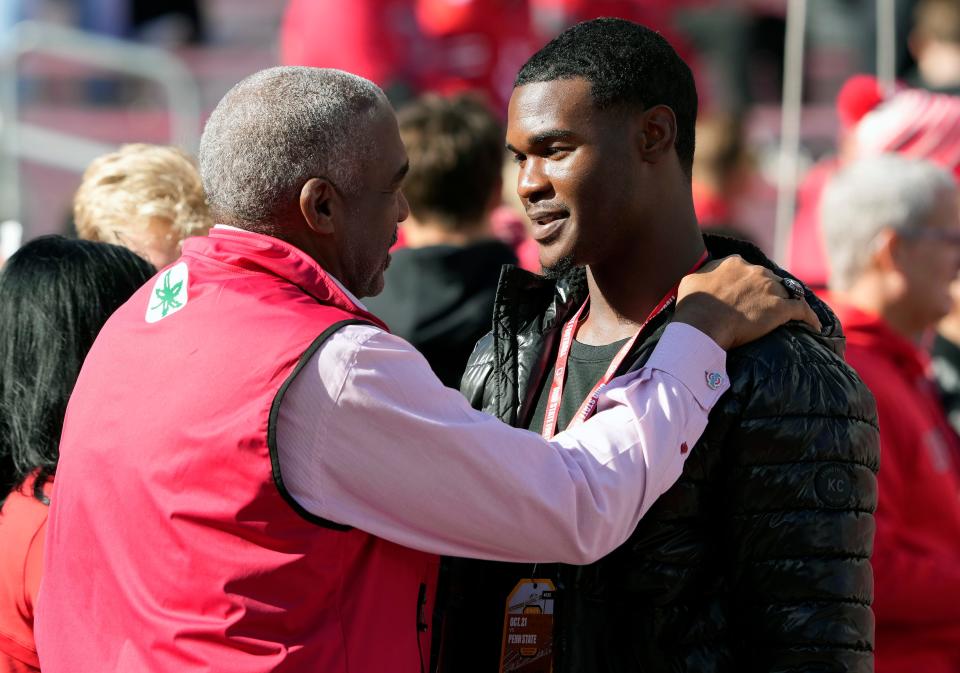
Delany said Smith pushed him to make the Big Ten office more diverse as well.
Jarmond said he and his peers are indebted to Smith.
“We all stand on his shoulders for how much he’s done and the way he goes about his business,” he said. “He hasn’t always needed to bang the table and be loud, but he has a quiet leadership to him, and people respect him. He knows how to get things done behind the scenes.”
Jarmond said he especially appreciates how comfortable Smith is in his own skin. He said there have been times when Smith has gone to meetings wearing a Tommy Bahama shirt and flip-flops.
“Gene is the one who taught me the most important thing is to be authentic with people and with yourself,” Jarmond said. “He is the most authentic and real person that I know.
“As a Black man, sometimes in corporate America you’re trying to be who you think they want you to be. That’s how my perception was — trying to fit in — because I’m in a world where not that many people look like me. Gene Smith, as a Black man, did so much for me just being his authentic self and that being OK.”
Diversity is important to Smith, but not for its own sake, he said.
“Where somebody is from, what they look like, their sexual orientation — I don’t care,” he said. “Frankly — and you can quote me on this — I like people who get s--- done.”
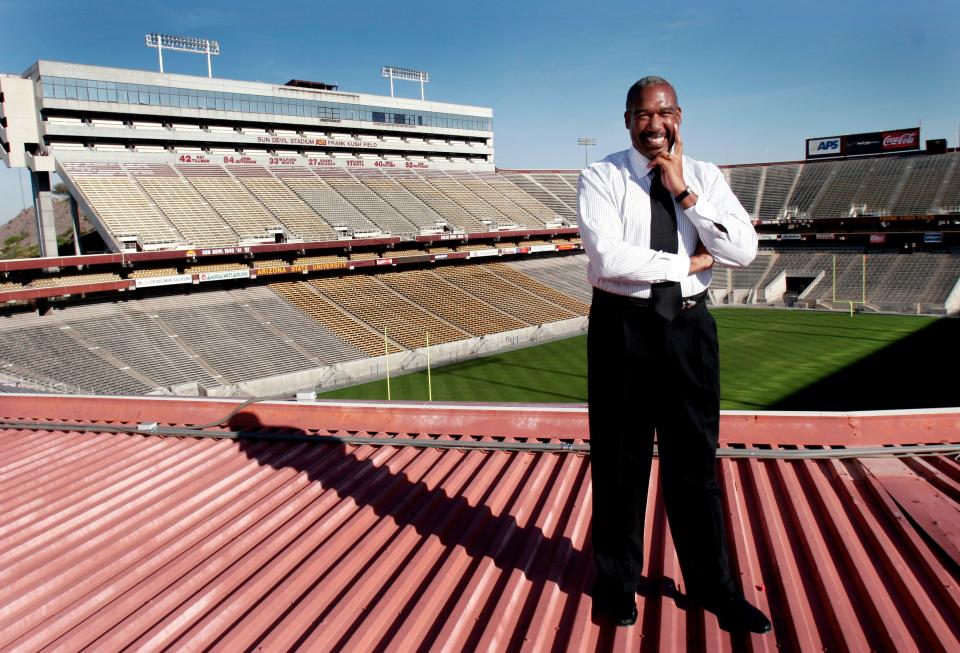
Finally, Gene Smith gets to relax
Smith’s last day of work at Ohio State is June 28. The next day, he and Sheila will fly to Colorado to spend a few days with family before they head back to Arizona, the state he left 19 years ago.
He and Sheila have a home awaiting them in Paradise Valley, a suburb of Phoenix.
“I’m excited,” Smith said. “I haven’t second-thought it at all. My wife and I had a really good plan, which is what my mentors recommended when you do retire. After running so hard, you’ve got to have a plan, and we have that.”
His job at Ohio State isn’t quite done. Smith has a final Big Ten meeting to attend. He plans to go to Stillwater, Oklahoma, to watch the men’s tennis team pursue an elusive NCAA team championship.
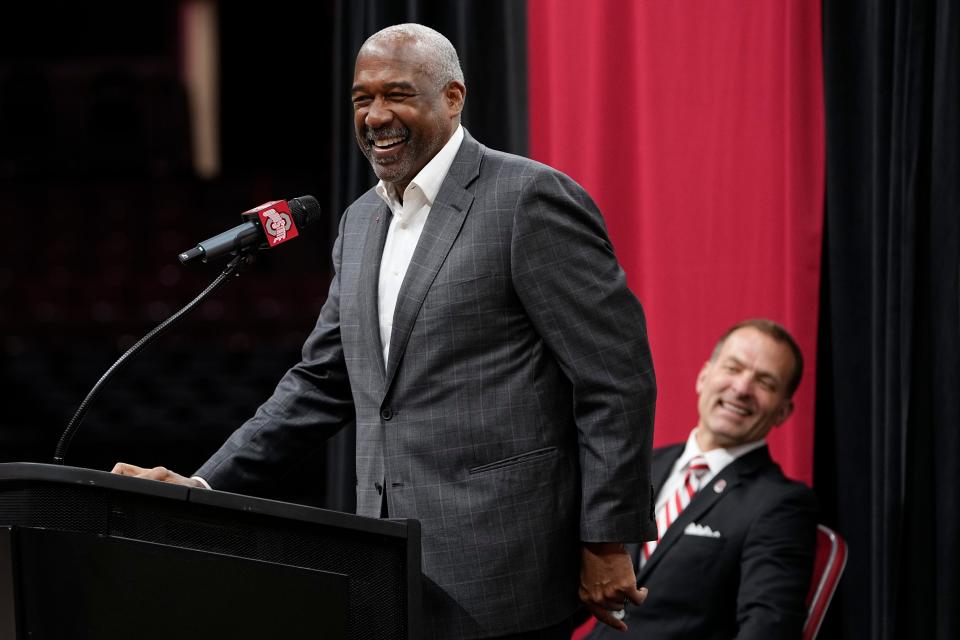
Smith also is helping his successor, Ross Bjork, with his transition into the job.
“He’s done a great job of transitioning,” he said.
Smith acknowledges he was sad for Chun that Ohio State president Ted Carter did not hire him.
“The president has to make that hire,” Smith said. “I knew that I needed to be there for the president. He asked me my opinion about certain people, which I did, and I was very positive about Pat. But I didn’t say, ‘You need to hire this guy.’ That would be totally inappropriate for me. Whoever was coming in needs to work with this president, and that president needs to feel comfortable with that guy.”
The college sports landscape seems to change by the day. Smith has been in the middle of it for decades. Now it’s time for others to carry the load.
As he departs, he believes his legacy is represented by those he worked with and tried to help.
“It’s the people,” Smith said. “The legacy is the culture within the athletic department among the people and the culture among the student-athlete population.”
That includes those now who have left OSU and are sharing what they learned under Smith.
"The AD's role is unique," Chun said. "It's really about other people's successes. When you total up the success the student-athletes have had academically and competitively at Ohio State, that's at the highest levels. You see the coaches he's retained or hired, and they've won at the highest levels. You see the administrators he's populated in and around college athletics.
"It's a magnificent masterpiece painting of a career that will never be duplicated in college athletics, especially with all the changes going on right now."
Get more Ohio State football news by listening to our podcasts
This article originally appeared on The Columbus Dispatch: Ohio State's Gene Smith: 'Magnificent masterpiece painting of a career'

